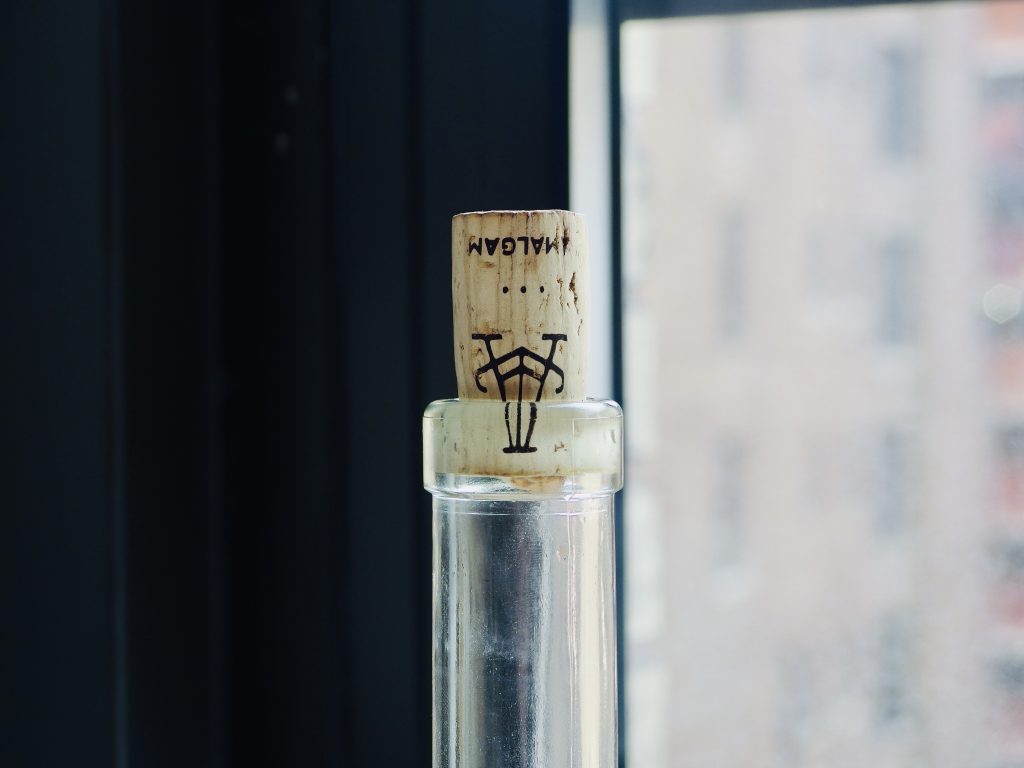Amalgam’s Experimental Cherry Reduction Beer
The Denver brewery uses a centuries-old technique to extract deep, complex notes from sour beer, barrels, and fruit

To produce in the traditional ice wine style requires patience. Grapes—while still on the vine—are frozen and subsequently concentrated, as the water within freezes but the sugars do not. When pressed, their juice proves far richer, deeper, and sweeter. Using this centuries-old concept as a starting point, Amalgam Brewing co-owners Eric Schmidt and Phil Joyce sought to replicate a similarly complex and concentrated beer. Beginning with a golden sour ale that had been aged in California Cabernet Sauvignon barrels, Joyce (head brewer) re-fermented the liquid on Colorado-grown Balaton cherries. Once the cherries macerated, Joyce oversaw the freezing of this liquid, and then ensured it was transferred to a freshly dumped bourbon barrel for another stint of aging. The result is a still liquid with aromatic qualities akin to an aged wine, and a palate reminiscent of cherry pie.
“Balaton Reduction was inspired by traditional eisbock production methods and culinary experimentation with a goal of adding a depth of complexity and flavor that wasn’t achievable through high-fruiting ratios alone,” Schmidt tells us. “We consider oak and time as integral ingredients in our beers and with this blend we also embraced slow oxidation similar to in barrel-aging stouts—something we’d never done with our mixed-culture beers.”

While plenty of breweries consider what a barrel will impart upon their final product, not many are willing to deviate to an extreme such as this. If this beer were bottled label-less, without the context of its producer, drinkers would have a difficult time deciphering what it was. It’s slightly sour, it’s robust and each step reveals itself in a sip.
“It’s a bit of a roller coaster if you’re willing to sit with it,” Schmidt says. “Delicate tannic structure and cherry pie notes imparted from the base beer; sweet cherry jam once reduced evolved into fruit leather and port wine character from oxidation; light heat on the backend is present from extended aging in a bourbon barrel.”

“Early on we experienced deep mead and cherry wine qualities which, over time, transformed into more of a port wine and with bright cherry flavors leading into stone fruit and Meyer lemon from our house culture,” he continues. “I try not to lead people too much when introducing them to beer, but I’ve definitely described it as port-meets-cherry-wine-meets-cherry-sour-beer.”

This explanation alone affirms the brewery’s commitment to experimentation. As natural wine, from a tasting standpoint, overlaps with sour beer and cider, it’s only fitting that beers (which have been wine barrel aged for decades) embody some of the characteristics of the market’s best vintage wines. Best consumed in smaller amounts, this drop is available in slender 375ml cork-stopped bottles.
“Beers like Balaton Reduction are honestly a way for us to follow our creative spirits and take risks through experimentation. We’re lucky to have a group of open-minded supporters that value our unique process and use of ingredients. Both Phil and I are excited by the idea of putting something new into the world and challenging the idea of what beer can be,” Schmidt ends. Though very few of these bottles remain—and they are tucked away in Amalgam’s cellar for now—new iterations are coming.
Images by Evan Malachosky












